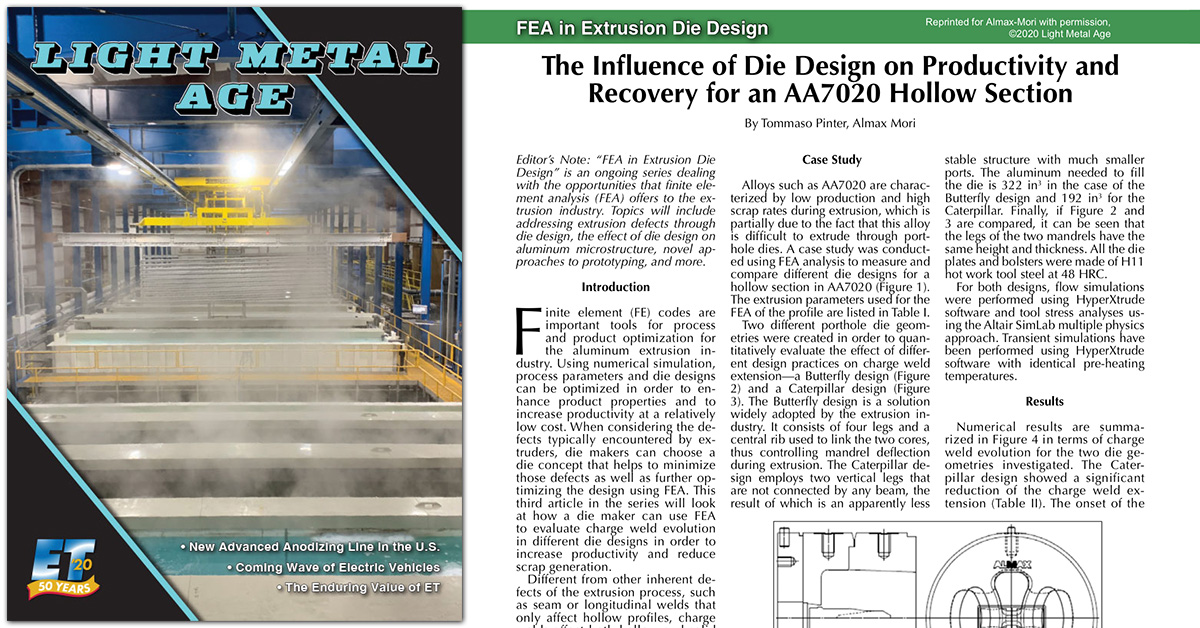
The Influence of Die Design on Productivity and Recovery for an AA7020 Hollow Section
Abstract
Finite element (FE) codes are important tools for process and product optimization for the aluminum extrusion industry. Using numerical simulation, process parameters and die designs can be optimized in order to enhance product properties and to increase productivity at a relatively low cost. When considering the defects typically encountered by extruders, die makers can choose a die concept that helps to minimize those defects as well as further optimizing the design using FEA. This third article in the series will look at how a die maker can use FEA to evaluate charge weld evolution in different die designs in order to increase productivity and reduce scrap generation. Different from other inherent defects of the extrusion process, such as seam or longitudinal welds that only affect hollow profiles, charge welds affect both hollow and solid profiles. Seam welds as such are unavoidable defects of the extrusion process. The portion of the profile containing the charge welds needs therefore to be discarded from the commercialized length if the final application requires a structural resistance.
